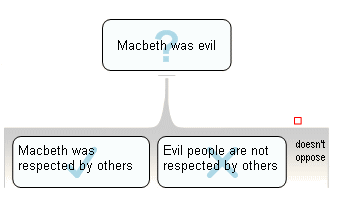The Science Of Scientific Writing Set 10 Set 10-Assessing again • Exercise 1 • Exercise 2 • Larger maps • Exercise 3 • Exercise 4 • Final.
OVERVIEW: The way to well-written science
PART I: Paragraphs and Sentences
SET A: Paragraphs: The Maps Behind Them
SET B: Paragraphs: Using Maps to Meet Readers' Expectations
SET C: Paragraphs with Something Extra: Points and Tails
SET D: The Generic Section: Expectations and Maps as Blueprints
SET E: Scientific Sections: The Methods and Results
SET F: Scientific Sections: The Discussion
SET G : Scientific Sections: The Introduction
SET H : Sentences
SET I : The Paper as a Whole
PART II: The Paper and its Sections
SET 1: Argument Parts
SET 2: Indicator Words
SET 4: Locating Arguments in Prose
SET 5: Rationale's Essay Planner
SET 6: Evidence in Arguments: Basis Boxes
Synthesis 1: Position-Early Paragraphs
Synthesis 2: Position-Final Paragraphs
Synthesis 3: Writing a Discussion I
Synthesis 4: Writing a Discussion II
Drag this model answer map onto your workspace to reveal an explanation of each step in the evaluation:
If you've read Shakespeare's play 'Macbeth' then you should agree that he was respected by others: in Act 1 he is praised several times. If you haven't read the play you should select 'Hmmm' for the main premise, to show you're reserving judgment until more information is available. This would also be an acceptable answer for Exercise 1.
We suspend judgment rather than accepting or rejecting the position a single failed objection doesn't tell us anything about how to decide whether the position is good.
Content of this page drawn in whole or part from the Austhink Rationale Exercises with permission from Austhink.
